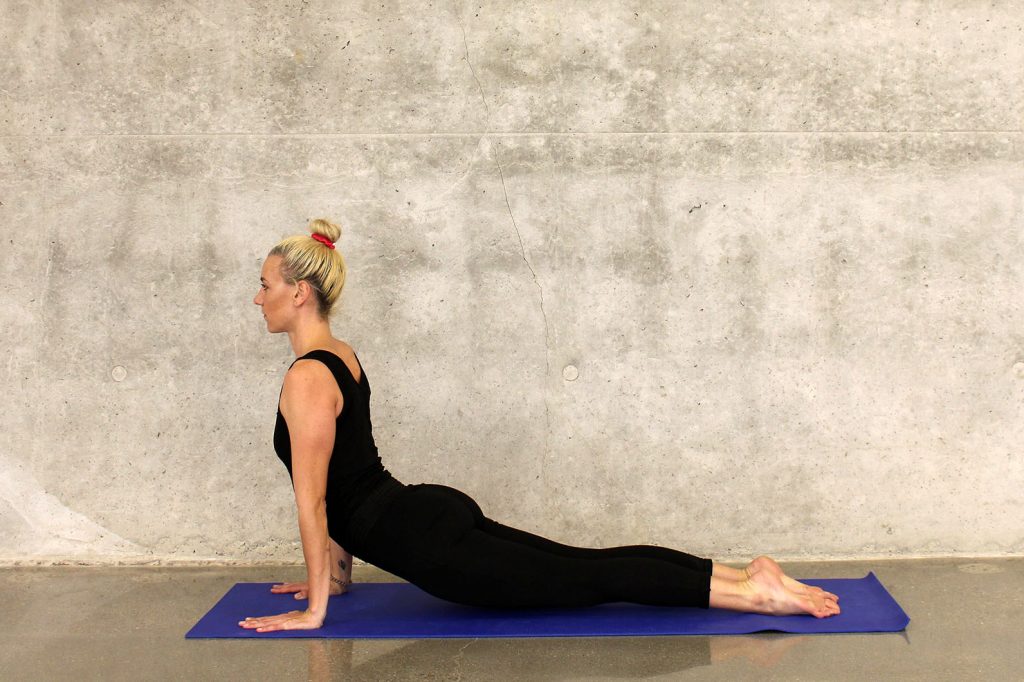Non Specific back pain also known as mechanical back pain is difficult to diagnose as the exact cause is not always clear. It involves structures in the back such as ligaments tendons, muscles and joints in between the vertebrae and intervertebral discs. Clients with mechanical back pain are generally in good health and pain can be relieved or exceptionally aggravated with certain movements and exercises. When an individual doesn’t know why they are experiencing pain in the back region, there are a few certain approaches you can try and adopt to ease and hopefully reduce the pain.
Always avoid exercises that aggravate the area further. Exercise techniques to focus on will include:
• Strengthening the core stabilisers that support the lumbar and pelvis region.
• Stretch areas that are tight or likely to become tight due to the result of the condition.
• Mobilise the stiffness in a pain free range of motion.
• Encourage good posture and repair faulty technique.
• Use props when necessary to adapt posture when needing to get into certain positions.
• Always master lower levels of exercise resistance before progressing onto higher levels of intensity.
Our spinal stability comes from deep core stabilisers. In particular transversus abdominis contracting with the pelvic floor and lumbar multifidus. Together they apply intraabdominal pressure along with the thoracolumbar fascia. When these provide stability and pressure it allows the superficial muscles such as rectus abdominis and external oblique’s to perform safe movements such as the curl up or the bicycle.
Effective programme designing should focus on key stages of progression. It should be set surrounding the build of strength in the core region with Pilates based exercises.
Phase 1- Learn voluntary control of the deep stabilisers.
The time should be spent learning to engage your core in standing, seated, lying and in the four point positions, kneeling. Attention should be upon maintaining neutral spine and good posture control, whilst engaging the deep stabilising muscles in isolation and being able to breathe as normal.
Phase 2- Build Stability Control
Once Phase 1 has been mastered and an individual is able to contract the correct muscles effectively they can progress onto Phase 2 which includes adding movement of the arms and legs. Challenge keeping the pelvis and lumbar spine stable whilst performing exercises. The curl up, one leg stretch, double knee folds, leg slide, one leg circle, swimming. Side lying exercises such as knee rise and leg lifts should be added in when continuous development of core control is experienced.
Phase 3- Mastering reduced attention
The final phase will be beneficial to everyday tasks and living. Reduced attention to which muscles need worked at certain times and applying engagement upon lifting, carrying, bending and twisting should automatically occur.
Additional exercises to strengthen the glutes and hips: Glute setting, hip abduction and adduction, shoulder bridge, oyster, side lying series, side kick. Mobility and Flexibility is a vital ingredient to solving lower back pain. The lower back extensors, gluteals, piriformis, hip flexors and the psoas all need to be worked and cared for to manage back pain.
Hamstring stretching, Spine stretching, ip stretching should be in your programme. Pelvic tilts, cat stretch, shoulder bridges, hip rolls are all exercises to alleviate back pain if performed successfully.
Remember there is not one cause that contributes to back pain and a number of factors need to be addressed to carefully manage and prevent the condition. Apply correct technique, appropriate loads and frequency towards all exercises performed. Time, care and patience should hopefully alleviate the pain in the lower back region. When in doubt reach out to a professional who can guide you towards the specific programming required for you. Kent Sport has plenty of qualified instructors and a Physiotherapist who will undoubtedly offer you the advice and support you need.
To find out more about Kent Sport Physiotherapy Clinic, visit www.kent.ac.uk/sports/physio and to make an appointment speak to a member of staff at the Sports Centre reception or call us on 01227 824375 or email physio@kent.ac.uk. For Kent Sport fitness and dance class timetable visit www.kent.ac.uk/sports/events or pick up a copy of Active Kent at the Sports Centre or Pavilion reception.
Sarah Black – Fitness Instructor

